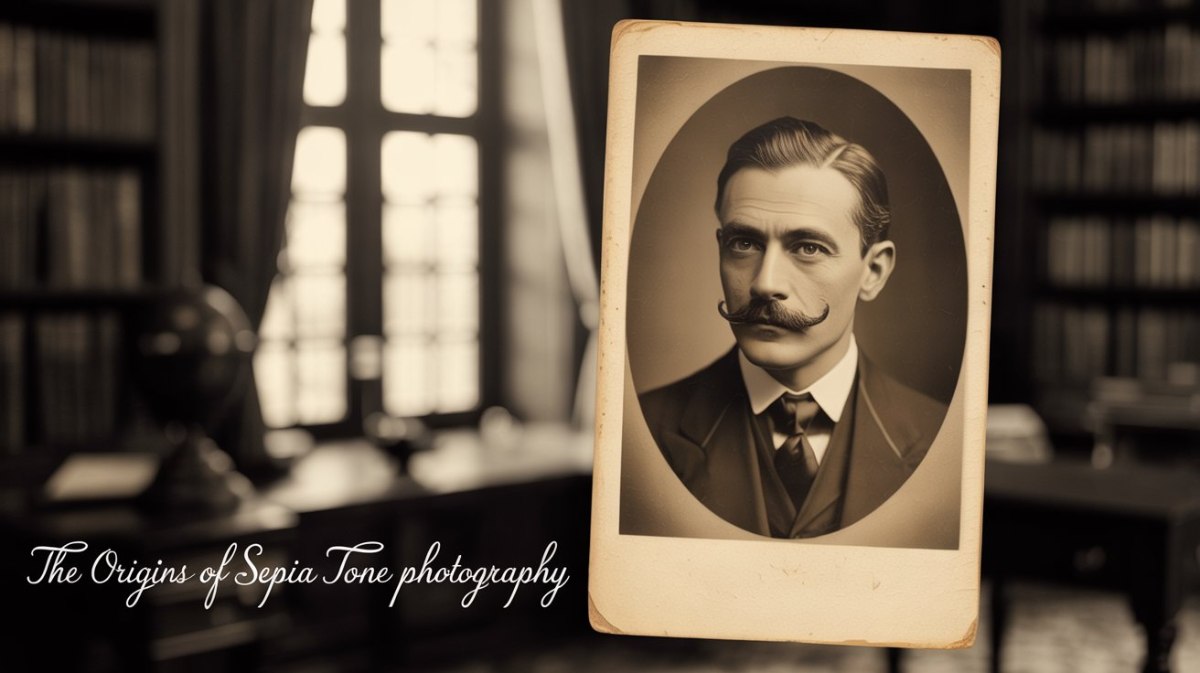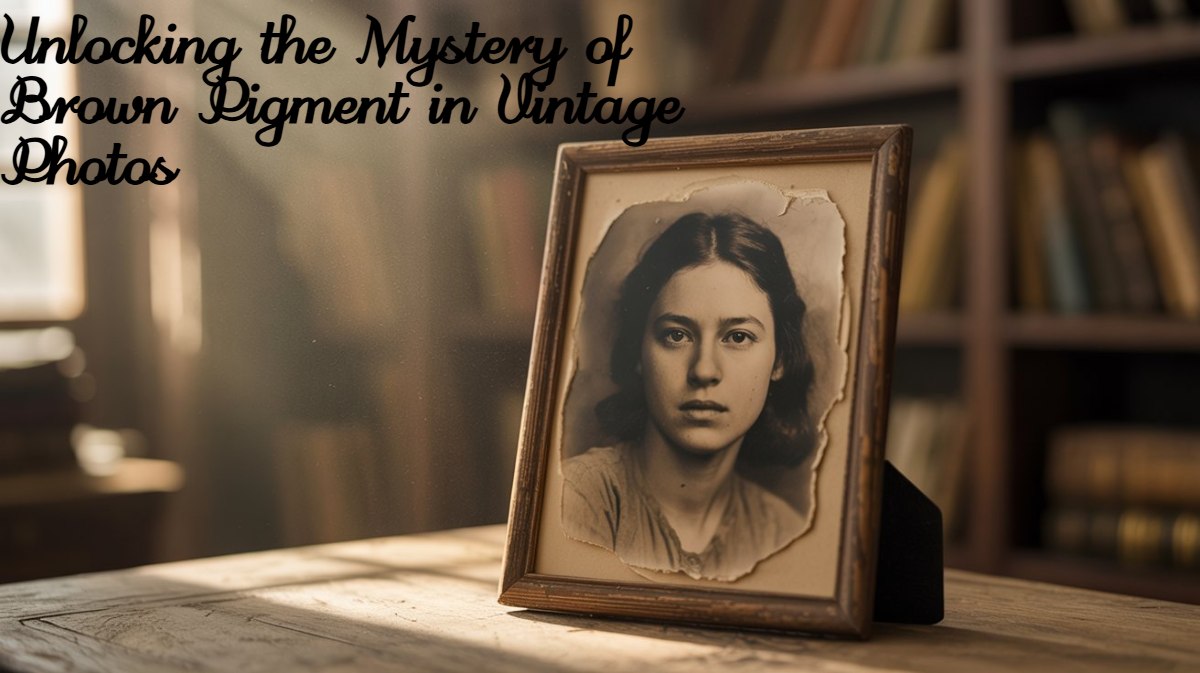Vintage photographs are more than just images—they are time machines that carry us back to moments long gone, telling stories through light, shadow, and subtle tones. Among the most fascinating aspects of these old photographs is the brown pigment in vintage photos, a feature often associated with sepia toning. This warm, earthy hue adds layers of nostalgia, transforming photographs into timeless artifacts that feel alive even after decades or centuries.
In this guide, we’ll explore the origins, science, cultural value, and preservation of the brown pigment in vintage photos, as well as methods for recreating the effect in the modern digital age.
Introduction to Brown Pigment in Vintage Photos
The brown pigment in vintage photos is not merely a stylistic choice—it is a symbol of memory, durability, and cultural identity. When we look at old portraits, war photographs, or early family albums, the warm sepia tones form a bridge to the past. Unlike stark black-and-white photography, sepia infuses images with warmth and intimacy.
These tones emerged from intentional chemical processes that not only enhanced aesthetics but also ensured that photographs could endure the test of time.
The Origins of Sepia Tone Photography

Sepia toning dates back to the mid-19th century, when photographers experimented with techniques to make images last longer. The term “sepia” comes from the Greek word for cuttlefish, whose ink was the basis of the pigment.
By the 1880s, the use of brown pigment in vintage photos had become a standard practice, particularly in Europe and North America. It was a technological solution with an artistic bonus: it protected prints from fading while giving them a warmer, more human quality.
The Chemistry Behind Brown Pigment
Sepia toning is a chemical replacement process. Traditional black-and-white photographs relied on metallic silver particles to form the image. These particles, while effective, were prone to degradation.
In sepia toning:
- The silver is converted to silver sulfide, which is more stable.
- The result is the brown pigment in vintage photos that resists fading.
Key Chemicals Used:
- Silver nitrate – Foundation of photo development.
- Sepia toners – Created the characteristic brown hue.
- Gold chloride – Sometimes added for richer effects.
| Aspect | Black-and-White Photos | Sepia-Toned Photos |
|---|---|---|
| Pigment Used | Metallic Silver | Silver Sulfide (Brown Pigment) |
| Color Tone | Grayscale | Warm Brown/Chocolate |
| Durability | Moderate | High (less fading) |
| Emotional Impact | Dramatic, stark | Nostalgic, warm |
| Cultural Perception | Documentary, formal | Historical, artistic |
Why Sepia Became the Standard in Early Photography
The brown pigment in vintage photos was embraced for several reasons:
- Practicality – Extended lifespan of images.
- Aesthetic value – Warmer tones felt less harsh.
- Cultural preference – Associated with elegance and artistry.
- Accessibility – By the late 1800s, sepia toning became affordable and widely available.
Historical Case Studies of Sepia Photography
Historical case studies of sepia photography reveal its importance in documenting the past. From Civil War battlefields to Victorian-era family portraits, sepia tones preserved images with warmth and durability. These photographs not only survived longer but also captured the emotional essence of history, making them timeless records of the past.
- Civil War Documentation: Many battlefield photographs survive today due to the use of sepia toning.
- Victorian Portraiture: Families cherished sepia portraits for their lifelike qualities.
- Early Scientific Photography: Botanists and explorers used sepia prints to document their discoveries.
Without sepia, countless historical images might have been lost.
Emotional and Artistic Impact of Brown Pigment
The brown pigment in vintage photos softens contrasts, lending a dreamlike quality to the images. This emotional layer:
- Evokes romance and nostalgia.
- Creates a timeless aura around subjects.
- Humanizes historical documentation.
In essence, sepia adds an emotional narrative that goes beyond what grayscale can achieve.
Brown Pigment vs. Traditional Black-and-White Photography
| Aspect | Brown Pigment (Sepia) | Traditional Black-and-White |
|---|---|---|
| Tone & Color | Warm brown shades with soft depth | Pure black, white, and gray contrasts |
| Emotional Impact | Nostalgic, gentle, and intimate | Dramatic, formal, and bold |
| Symbolism | Associated with memory, heritage, and timeless storytelling | Represents clarity, seriousness, and realism |
| Durability | Silver sulfide (sepia) is more stable and resistant to fading | Metallic silver is less stable, prone to quicker fading |
| Artistic Appeal | Adds warmth, romance, and historical charm | Highlights sharp contrasts and formal aesthetics |
| Cultural Perception | Seen as antique, vintage, and emotionally resonant | Seen as classic, documentary-style, and authoritative |
In short, sepia’s brown pigment captures the heart with nostalgia, while black and white capture the eye with intensity and formality. Both hold unique artistic and historical value, appealing to different audiences and purposes.
The Cultural Symbolism of Sepia Photography
The cultural symbolism of sepia photography lies in its strong connection to memory, authenticity, and a sense of nostalgia. The brown pigment in vintage photos represents the passage of time, reminding viewers of history, heritage, and lost eras. Often utilized to signify “the past” in films, art, and media, sepia tones embody warmth, romance, and timeless storytelling that black-and-white images alone cannot convey.
- Memory and history – A window to the past.
- Authenticity – Old family photos often carried sepia tones.
- Artistic depth – Painters and photographers valued sepia for its storytelling capabilities.
Even today, sepia remains associated with “the past” in film, media, and pop culture.
Preservation Challenges of Brown Pigment
The preservation challenges of brown pigment in vintage photos stem from environmental and chemical factors. Exposure to light, especially UV rays, can cause fading, while humidity and temperature fluctuations accelerate chemical breakdown.
- Fading due to prolonged light exposure.
- Yellowing of paper.
- Physical damage from poor storage.
Scientific Causes of Brown Pigment Fading
The scientific causes of the fading of brown pigment in vintage photos are mainly linked to chemical reactions and environmental stress. Ultraviolet light breaks down the silver sulfide compounds that create the sepia tone, while humidity and moisture trigger oxidation and chemical instability.
- Ultraviolet radiation breaks down chemical bonds.
- Moisture accelerates chemical decay.
- Air pollutants react with photo compounds.
Best Practices for Preserving Vintage Photos
The best practices for preserving vintage photos with brown pigment include storing them in a cool, dark, and dry environment to minimize fading and chemical damage. Use acid-free albums, archival-quality sleeves, or storage boxes to prevent discoloration and ensure long-term preservation.
- Store photos in acid-free boxes.
- Please keep them in low-humidity, cool environments.
- Use gloves when handling to avoid oil damage.
- Digitize images for backup.
Digital Restoration: Bringing Brown Pigments Back to Life
Modern technology allows us to restore faded sepia tones.
- AI tools can reconstruct missing details.
- Photoshop & Lightroom help adjust tones.
- Archival scanning ensures high-quality digital backups.
Digital restoration ensures that the brown pigment in vintage photos endures for future generations.
Modern Photography and Sepia Filters
Today, sepia is no longer a chemical process, but a digital one. Photographers use:
- Built-in camera filters.
- Mobile apps like VSCO and Snapseed.
- Editing software like Lightroom.
The brown pigment in vintage photos thus continues to inspire creative professionals.
DIY Methods for Achieving Sepia Effects Today
Want to recreate the vintage look?
- Convert your image to black-and-white.
- Apply a sepia filter.
- Adjust saturation and warmth.
- Add texture overlays for authenticity.
With a few clicks, you can replicate the beauty of brown pigment in vintage photos.
Collecting and Authenticating Sepia Photographs
Collectors treasure sepia-toned photos for both their historical and monetary value.
Tips for Collectors:
- Check for authentic aging vs. modern filters.
- Look for the sharpness of details.
- Verify paper type and watermark.
Economic and Artistic Value of Sepia-Toned Photos
The economic and artistic value of sepia-toned photos lies in their rarity, historical importance, and timeless aesthetic appeal.
- Historical portraits often fetch high prices at auctions.
- War-era photographs are prized for rarity.
- Artistic sepia prints continue to capture the attention of galleries.
The market for the brown pigment in vintage photos remains strong.
Conclusion
The brown pigment in vintage photos embodies a rich blend of history, science, and artistry. From its roots in cuttlefish ink to its chemical innovations in the 19th century, sepia has stood the test of time. Its warmth, durability, and emotional resonance make it one of photography’s most significant legacies.
Whether you are a historian, collector, or modern photographer, understanding sepia is key to appreciating the timeless power of photography. With digital tools and protection methods, the beauty of sepia-toned images will continue to inspire generations.
Frequently Asked Questions (FAQs)
Why do old photos look brown instead of black-and-white?
Because they were chemically treated with sepia toning, which replaced silver with silver sulfide, creating a warm brown pigment.
How can I preserve my old sepia photos?
Please keep them in cool, dark, and dry places using archival materials, and digitize for backup.
Can modern cameras create sepia effects?
Yes, many digital cameras and editing apps include sepia filters.
Does sepia really last longer than black and white?
Yes, silver sulfide (brown pigment) is more stable than metallic silver, making sepia prints more resistant to fading.
Are sepia-toned photos more valuable than black-and-white ones?
Often yes, especially if they are historical portraits or rare images. Collectors value the brown pigment in vintage photos for both its durability and emotional resonance.





